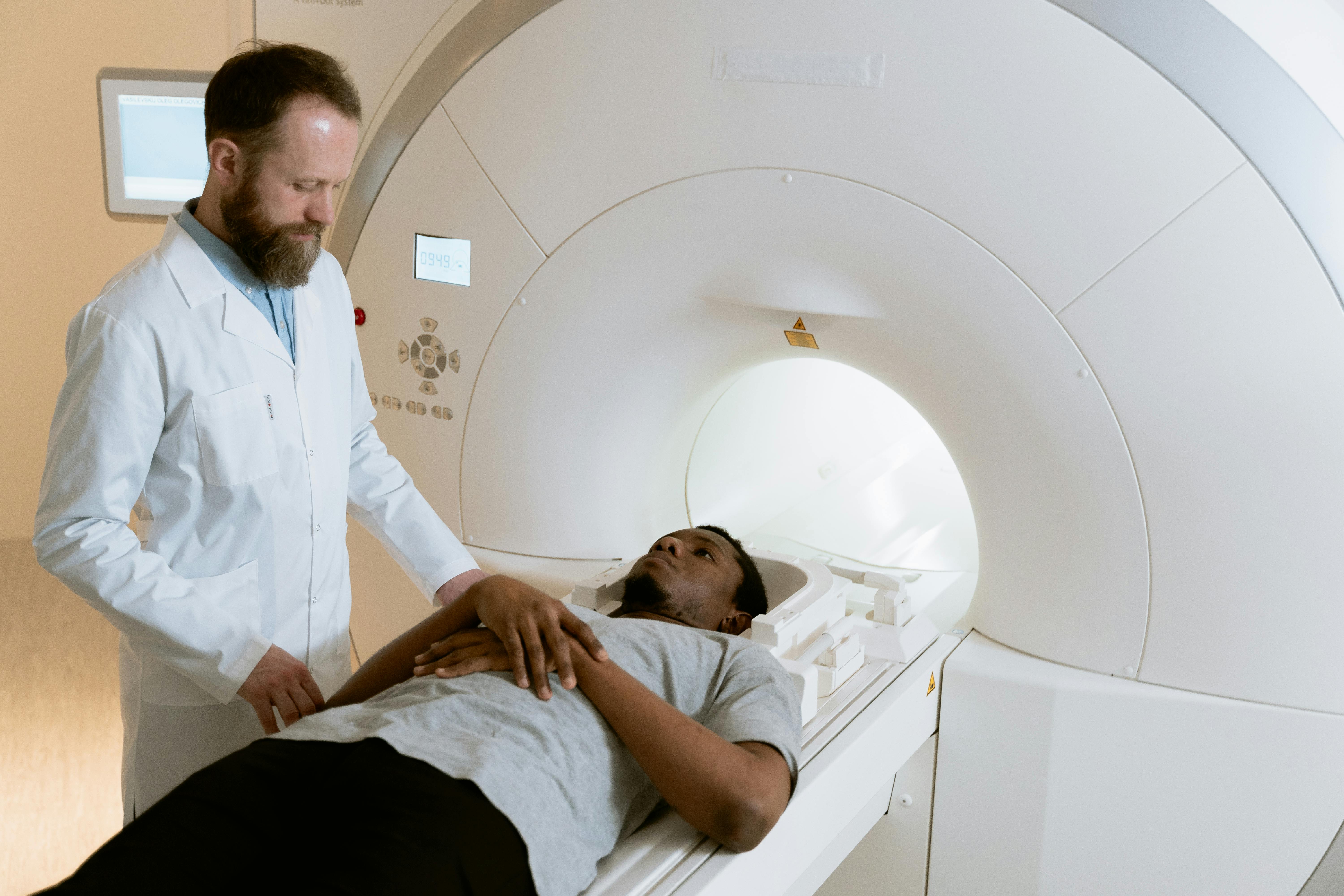Magnetic Resonance Imaging (MRI) is a powerful and non-invasive medical imaging technique that uses strong magnetic fields, radio waves, and a computer to produce detailed images of the body's internal structures. It has become an essential tool for diagnosing and monitoring various conditions and diseases, such as cancer, neurological disorders, musculoskeletal injuries, and cardiovascular problems. The basic principle of MRI lies in the interaction between the magnetic field, radiofrequency pulses, and the hydrogen atoms (protons) present in the body's water molecules. The human body is composed of about 60% water, making it an excellent subject for MRI. When placed in a strong magnetic field, the hydrogen atoms align along with the direction of the magnetic field.
A radiofrequency pulse is then applied, which briefly disturbs the alignment of the hydrogen atoms. After the pulse is turned off, the atoms naturally return to their original alignment with the magnetic field, and in the process, they emit radio signals. These emitted signals are detected by the MRI scanner and used to create digital images of the body's internal structures. The actual MRI procedure involves the patient lying on a cushioned platform, which slides into a tube-like structure called the magnet. The magnet produces the strong magnetic field required for the MRI scan, and it can be either a closed or open design. Closed magnets are typically more powerful and result in higher-quality images, but they may not be suitable for patients with claustrophobia or larger body size. Open magnets, on the other hand, provide more space and comfort, but sometimes offer lower image quality. One of the critical components of an MRI machine is the coil, which is responsible for both sending the radiofrequency pulses and receiving the signals emitted by the hydrogen atoms.
There are various types of coils that can be used depending on the area of the body being imaged. Some examples are the head coil, knee coil, and body coil. The choice of coil is essential to produce high-quality images and maximize patient comfort. MRI provides exceptional soft-tissue contrast, which enables physicians to visualize a wide range of anatomical structures with remarkable clarity. It can differentiate between various types of tissues, such as muscle, fat, and fluid, as well as detect pathological changes in organs and structures. For instance, MRI can help visualize tumors in the brain or liver, detect multiple sclerosis lesions in the central nervous system, or assess the extent of injuries in tendons and ligaments. It is also used in functional MRI (fMRI) to study brain activity by detecting changes in blood flow related to neural activity. One of the advantages of MRI is that it does not use ionizing radiation (like X-ray or CT scans), which can potentially increase the risk of cancer in the long term. This makes MRI safer and more suitable for repeated examinations or imaging of sensitive areas, such as the brain, reproductive organs, or developing fetuses. However, due to the strong magnetic field and the use of radiofrequency pulses, some precautions must be taken when performing MRI scans. People with certain implanted devices, like pacemakers or cochlear implants, may not be suitable candidates for MRI, since the magnetic field could potentially interfere with their function. Patients with metal implants or shrapnel injuries must also inform their physician and technician before an MRI scan, as the magnetic field may cause these objects to move or heat up. MRI has revolutionized modern medicine by providing a non-invasive and highly accurate method for visualizing the body's internal structures. It allows for early detection and diagnosis of various medical conditions, monitoring disease progression, and assessing the efficacy of treatments. With continued advancements in MRI technology, such as higher magnetic field strengths, faster scanning techniques, and improved image processing algorithms, the potential of this imaging modality to provide even more insight into the human body is bright.



